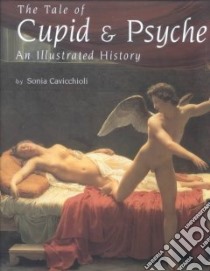The Tale of Cupid and Psyche - 9780807615126
Un libro in lingua di Sonia Cavicchioli edito da George Braziller, 2002
- € 69.30
- Il prezzo è variabile in funzione del cambio della valuta d’origine
Once upon a time there lived a king and queen who had three very beautiful daughters....It was only just possible to find words of praise for the elder two and to express the breath-taking loveliness of the youngest...was beyond all power of human speech. Every day thousands of her father's subjects came to gaze at her, foreigners too, and were so dumbfounded by the sight that they paid her the homage due to the Goddess Venus alone. The passionate love story of a god and an exquisitely beautiful mortal woman, the myth of Cupid and Psyche has fascinated Western culture since the Middle Ages. First appearing as a long aside in Apuleius's The Golden Ass in the second century AD, this romance has inspired countless works of art in an astonishingly wide range of media. Gathered here is a selection of these numerous works, from monumental fresco cycles, to easel paintings and wedding chests, from miniatures, tapestries, and stained-glass windows, to marble and porcelain sculptures. Many are considered masterpieces of European art. The sheer number and beauty of the works this myth has inspired is a testament to the power and richness of the story. The lovers are often portrayed as children to suggest their eternal youth and immortality. In some scenes they are shown kissing, in others, tormenting each other, expressing the extremes of joy and suffering that beset all lovers. The changing tastes and sensibilities of different periods are reflected in Psyche's appearance, evolving from courtly and Baroque to neoclassical and Pre-Raphaelite. For the modern age, it is the dual nature of Cupid and Psyche's love, on the one hand deeply spiritual, and on the other intensely sensual, that has resonated most powerfully. "It seems," noted Walter Pater, the nineteenth-century British critic, of Apuleius's story, "that one can see and touch the blond hair, the fresh flowers, the precious works of art of which he speaks." Thanks to the extraordinary artworks included in this book, we can indeed see, if not touch, the splendors of Apuleius's story. 96 color illustrations, 128 in b/w.
Informazioni bibliografiche
- Titolo del Libro in lingua: The Tale of Cupid and Psyche
- Sottotitolo: An Illustrated History
- Lingua: English
- Autore: Sonia Cavicchioli
- Editore: George Braziller
- Collana: George Braziller (Hardcover)
- Data di Pubblicazione: 01 Settembre '02
- Genere: ART
- Argomenti : Eros (Greek deity) Art Psyche (Greek deity) Art Cupid and Psyche (Tale) in art
- Pagine: 224
- Dimensioni mm: 298 x 241 x 19
- ISBN-10: 0807615129
- EAN-13: 9780807615126


